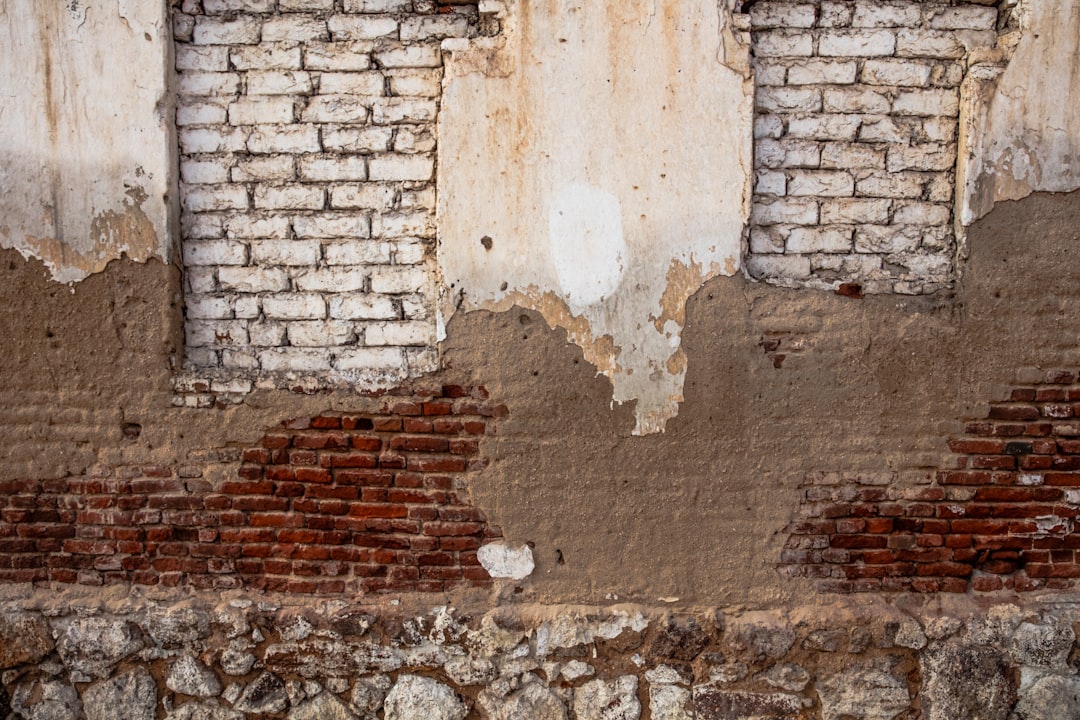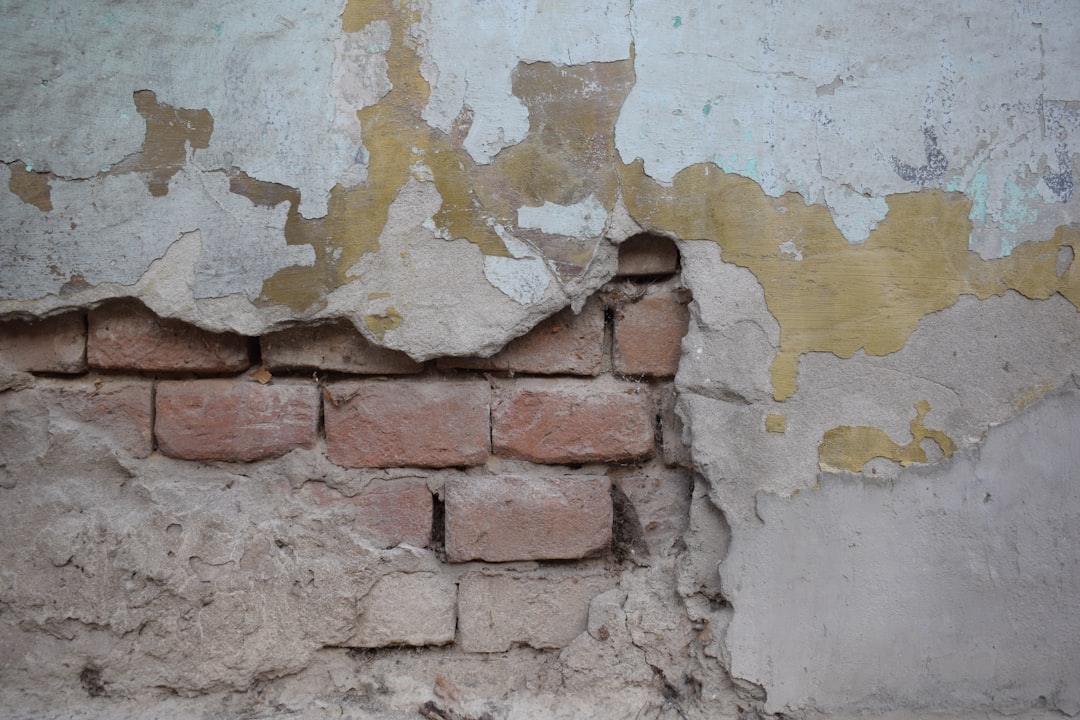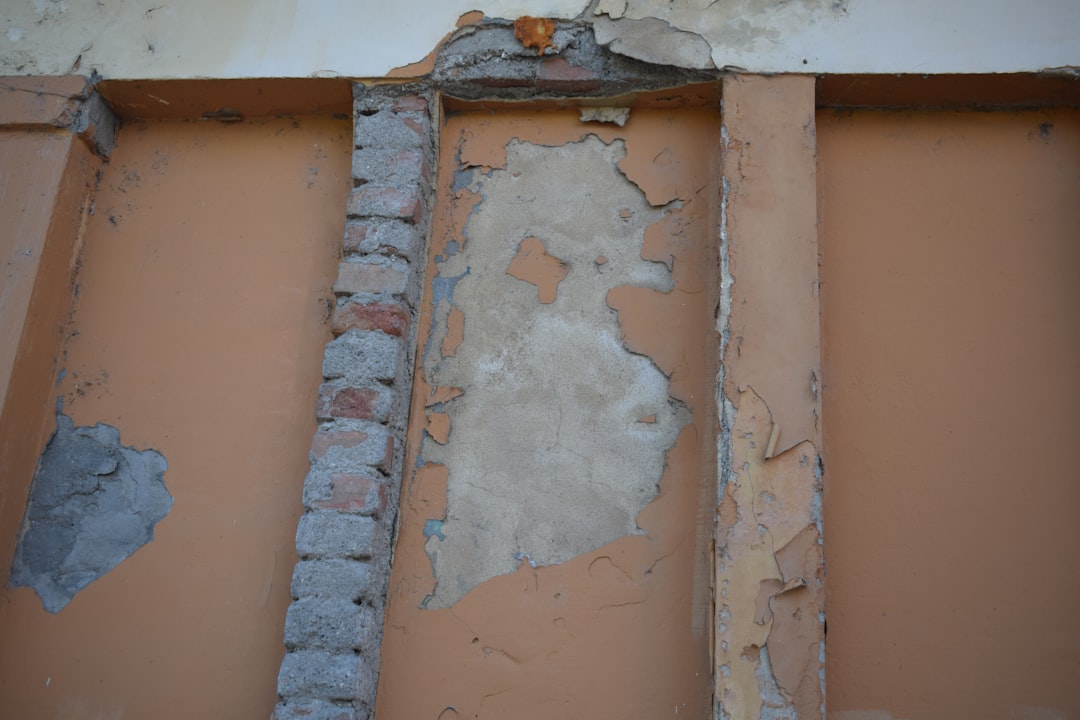

Engage prospects with a scan and streamline customer engagement with FREE QR code marketing tools by Sona – no strings attached!
Create a Free QR CodeFree consultation

No commitment

Engage prospects with a scan and streamline customer engagement with FREE QR code marketing tools by Sona – no strings attached!
Create a Free QR CodeFree consultation

No commitment
QR codes have evolved from a novelty to a strategic powerhouse for bridging offline engagement with online action. For foundation repair services, QR codes represent a streamlined, frictionless, and highly effective method to verify jobs, accelerate service confirmation, and capture critical data without requiring app downloads or technical know-how. As consumers increasingly seek transparency and security when selecting foundation repair contractors, the ability to instantly validate service details or track project status becomes essential.
One persistent frustration in the industry is the risk of missing high-value prospects and failing to capture opportunities on-site, especially when job verification or service confirmation relies on manual workflows. When property owners or adjusters are not tracked or documented in real time, jobs can stall, verification slips through the cracks, and valuable leads go unpursued.
QR codes empower foundation repair businesses to swap outdated workflows like printed verification slips, manual sign-in sheets, and paper-based checklists with digital alternatives that create a seamless customer experience. These tools help drive trust and accountability with property owners and insurance adjusters while ensuring every project milestone is recorded and actionable.

Many foundation repair teams grapple with slow or incomplete documentation, often losing track of service milestones and lead interactions in the field. These inefficiencies can result in missed outreach windows, delayed payments, and even disputes with customers or insurers. QR codes bridge the gap between physical project work and digital documentation, making it easier to achieve business goals like service transparency, faster approvals, and improved customer communication.
By planning QR deployments with intent and tracking results rigorously, contractors can replace analog bottlenecks with measurable, repeatable workflows. What once required clipboards, phone tag, and after-hours data entry can now happen in real time at the jobsite, inside the customer’s mailbox, or on a truck door that doubles as a digital entry point.
Modern QR solutions can automate audit trails and link every scan directly to CRM records, which dramatically reduces time to respond and proves value with clear attribution. Platforms like Sona QR support dynamic codes, integrations, and campaign-level analytics so your team can move from guesswork to confident, data-backed decisions.

Foundation repair services must balance technical complexity with customer reassurance. You frequently document hidden damage, coordinate across homeowners and insurers, and ensure regulatory compliance on each project. A lack of visibility into who is engaging with project information leads to missed leads and stalled verification. QR codes provide a practical bridge from the jobsite to your software stack so no touchpoint goes untracked.
The value of QR codes compounds when deployed on materials common to the trade: inspection reports, proposals, jobsite signage, fleet graphics, door hangers, invoices, and warranty certificates. Each physical item becomes a digital doorway, accelerating next steps while capturing the context your CRM needs to convert and retain customers.
Example: A QR code printed on warranty certificates enables instant upload of digital documentation and proof of work. Both customers and internal teams gain 24 or 7 access to critical records, which reduces disputes, shortens claim cycles, and prevents churn linked to misplaced paperwork.

Foundation repair teams rely on a mix of documents and on-site interactions to move projects forward. QR codes adapt to these varied needs by linking each physical artifact to a next step that is actionable, traceable, and consistent. The right format amplifies usefulness while the right destination ensures the customer never hits a dead end.
For this vertical, the most useful formats are those that accelerate verification, simplify data capture, and keep contact details at hand for quick follow-up. A dynamic QR strategy allows you to update content over time, making your printed materials futureproof.
Dynamic QR codes are particularly valuable for status updates, warranty registration, and maintenance reminders. When your team changes a project phase in the CRM, the linked status page updates automatically, keeping customers informed without additional calls. Over time, this cohesive digital journey reduces missed upsell opportunities and builds trust through predictable communication.

The easiest growth to capture often hides in the spaces where leads leak: untracked door hangers, invoices that never prompt a review, jobsite signs that do not connect to a service request, or estimates that do not tie back to the CRM. QR codes close these gaps by connecting moments of interest to measurable outcomes.
Focus on placements where property owners, real estate agents, inspectors, and insurers already engage. Align each placement with a clear call to action that suits the context, and ensure every scan routes to mobile-friendly content that loads fast and delivers value in under ten seconds.
Coordinating QR placements across each key customer touchpoint prevents loss of high-value prospects and supports timely follow-up. When every touchpoint becomes a lead capture opportunity, your pipeline grows while your team spends less time chasing paper trails.

Foundation repair projects progress through a series of critical checkpoints: inspection, proposal, execution, verification, and warranty. QR codes streamline each stage, ensuring data fidelity and consistent customer updates. They also turn everyday artifacts into high-performing assets by embedding clear CTAs and trackable links.
A recurring pain point is late or incomplete capture of engagement signals. When you use QR codes to centralize and timestamp each interaction, you gain audit-ready records, faster approvals, and a pipeline of upsell opportunities that would otherwise go unnoticed.
A digital QR platform ensures each interaction is logged against the correct project and customer record, making it easy to audit, report, and respond quickly. With Sona QR, you can route each code to the right destination, update links without reprinting, and sync scan activity to your CRM so nothing slips through the cracks.
Every QR scan carries intent. A homeowner scanning a “View repair photos” code is different from a neighbor scanning a “Get a free inspection” sticker on your truck, and both differ from an adjuster scanning to approve a milestone. Segmentation lets you tailor follow-ups based on what each person needs next, which increases conversion efficiency and reduces wasted outreach.
The key is to tag each QR with context: location, placement, stage of journey, and call to action. Then, feed these tags into your CRM and ad platforms to trigger relevant communication. Over time, your database evolves into a set of high-quality, self-sorting segments aligned to purchase readiness.
For example, segmenting audiences by QR action, such as “DIY waterproofing tips” versus “See underpinning results,” allows you to personalize follow-up with relevant case studies or financing calculators. This raises conversion rates while focusing your sales team on the highest probability opportunities.
Channel silos can destroy ROI. Field teams capture interest in person while the marketing team measures website clicks, and the two datasets never meet. QR codes create a shared layer that connects print, field, and digital channels to a common system of record. This reduces friction for customers and gives teams a unified view of engagement.
To maximize value, treat every QR placement as a miniature landing page strategy. Decide what someone should learn or do after the scan, ensure the content is tailored and fast-loading, and close the loop with automation that schedules the next best action for your team.
A unified platform like Sona QR lets you manage all codes in one place, monitor performance by channel and campaign, and sync scan data with your CRM and ad platforms. The result is an offline-to-online funnel that is measurable, optimizable, and aligned to revenue.
Start with a single, high-value problem that QR codes can simplify. Common goals in foundation repair include real-time service verification, faster warranty registration, and driving estimate requests directly from on-site signage or direct mail. Define a specific outcome such as “reduce verification turnaround from 48 hours to 6 hours” or “increase warranty registrations by 30 percent within 60 days.”
Clarify who benefits and how. For example, a homeowner gains transparency and immediate access to project status, while your team gains timestamped confirmation and fewer inbound calls. Choose a use case with tight scope and visible impact so you can prove success quickly and build momentum.
Decide between static and dynamic codes based on how much flexibility and tracking you need. Static codes are suitable for fixed content like a PDF explaining slab jacking, but they cannot be edited after printing. Dynamic codes allow you to update destinations without reprinting and include analytics, device detection, and routing rules.
In foundation repair, dynamic codes are usually the better choice. Your services, pricing, and regulatory notes evolve, and you need scan data to measure performance. If you plan to retarget scanners or automate follow-ups, dynamic codes are essential.
Good design drives scanning. Surround the QR with a benefit-driven call to action and ensure contrast, size, and placement make scanning effortless. Include your logo and brand colors, but do not over-style to the point of harming scannability. Aim for at least 1 inch by 1 inch for close-range materials and larger sizes for signs viewed from a distance.
Before deploying, test across devices, operating systems, and lighting conditions that mirror real-world use. Simulate glare at job sites, scan through phone cases, and check low-signal environments. Confirm the destination loads fast and is mobile-optimized.
Place QR codes where they align with customer journeys. On-site signs should link to status or verification pages, invoices should link to reviews and warranties, and direct mail should link to local estimates and testimonials. Match the code’s purpose to the environment and ensure the action is easy to complete in seconds.
Use unique codes per channel and location so you can tell what works. For example, a QR on a jobsite sign can trigger a “neighbor discount” estimate form, while a QR on an inspection report routes to a compliance packet for an adjuster.
Tracking transforms QR from a novelty into a performance channel. Monitor scan volume, unique scanners, conversion rate, device mix, and time of day. Use these insights to optimize CTAs, placements, and landing pages. Automate follow-up sequences so every scan triggers the next best action for your business and your customer.
Integrate your QR platform with your CRM to enrich contacts with scan data and route tasks to sales or operations. Run A or B tests on messaging and creative. Share wins with the field team so they see the impact of better placement and customer education.
Tying field engagement to revenue has long been a challenge in foundation repair. Without robust tracking, teams rely on estimates and anecdotes that do not stand up in planning meetings. QR platforms close this loop by recording every engagement and mapping it to pipeline and post-sale outcomes.
The goal is not just to count scans. It is to understand which placements, messages, and use cases move customers from awareness to decision and beyond. When you can attribute booked inspections, approvals, and warranty enrollments to specific QR touchpoints, you gain the evidence needed to scale what works.
By prioritizing end-to-end visibility, contractors move beyond manual logs and guesswork. Sona QR captures real-world engagement, while Sona.com translates it into insights that show exactly how QR programs influence quoting, approvals, upsells, and renewals.
Even strong QR initiatives can plateau without refinement. The most common issues are insufficient segmentation, vague CTAs, and limited follow-through after the scan. With a few targeted adjustments, you can extend gains and turn QR into a cornerstone of verification and growth.
Focus on tips that match your most common media and workflows. In foundation repair, that often means invoices, inspection reports, fleet graphics, and neighborhood signage. Align each deployment with a clear value promise so homeowners feel confident scanning.
Creative example: Place a durable QR sticker on key foundation elements, such as a pier cap or sump system panel, so future owners and inspectors can access installation records, maintenance schedules, and warranty status instantly. This protects documentation integrity and creates a long-term channel for service offers and reminders.
Foundation repair services have long contended with lagging documentation, missed leads, and opaque ROI tied to fieldwork. QR codes transform service verification by turning every site visit, inspection form, and project sign-off into a digital opportunity. With QR integration, anonymous jobsite interactions give way to timestamped records that build trust and accelerate approvals. Contractors can provide instant access to project updates, automate warranty management, and close the feedback loop from field teams to the back office in minutes rather than days.
The benefits go beyond operational efficiency. QR programs bring clarity to marketing and growth. They capture engagement at the source, attribute results accurately, and enable personalized follow-up that moves prospects from curiosity to commitment. By connecting scans to customer journeys, cost reporting, warranty enrollment, and regulatory compliance, foundation repair contractors gain visibility and control that was not possible with paper workflows alone.
QR code programs deliver more than streamlined project verification; they help solve missed engagements, documentation delays, and unclear campaign ROI while building the technical foundation for long-term growth. Even a focused, trackable QR campaign can surface quick wins and highlight the next best investments. With Sona QR and Sona.com, you can generate dynamic codes, manage placements across channels, integrate scan data into your CRM, and attribute impact to revenue, giving your team the confidence to scale what works and retire what does not.
Start creating QR codes for free.
QR codes have revolutionized foundation repair services by transforming traditional verification methods into instant, reliable, and trackable interactions. Whether it’s confirming service authenticity, enhancing customer trust, or streamlining post-repair follow-ups, QR codes replace cumbersome paperwork with seamless mobile access and real-time data capture. Imagine your clients scanning a code to instantly verify repairs, access warranties, and receive maintenance tips—boosting confidence and satisfaction at every step.
With Sona QR, you gain the power to create dynamic, trackable QR codes that update instantly without reprinting, linking each scan directly to service records and customer feedback. This means no lost information, quicker dispute resolution, and stronger client relationships—all while driving repeat business and referrals. Start for free with Sona QR today and turn every scan into a verified, trusted connection that builds your foundation repair reputation.
QR codes streamline service verification, enhance transparency, accelerate approvals, reduce paperwork, improve customer communication, and enable data-driven follow-up and marketing.
QR codes replace manual workflows by linking physical artifacts to digital records, enabling real-time job verification, timestamped confirmations, and centralized project documentation accessible to homeowners, inspectors, and insurers.
Useful QR code formats include web links to project dashboards, forms for feedback and warranty registration, vCards for contact sharing, photo and document access, and email or SMS triggers for quick communication.
Effective placements include jobsite signage, inspection reports, invoices, direct mailers, door hangers, service vehicles, uniforms, and warranty certificates to connect with property owners, adjusters, and inspectors.
Dynamic QR codes allow content updates without reprinting, provide analytics for tracking scans, enable routing rules, and support automation, making them ideal for evolving services, pricing, and customer follow-up.
Contractors should track verification turnaround time, customer satisfaction, claim resolution rates, scan volume, unique visitors, conversion rates, and downstream revenue linked to QR engagements.
By tagging QR codes with context like location, placement, and call to action, companies can segment audiences based on intent and behavior, syncing data with CRM and ad platforms for personalized follow-up.
Best practices include choosing clear CTAs, ensuring good contrast and size for scanning, testing across devices and lighting, placing codes on relevant materials, and tracking performance to optimize campaigns.
QR codes capture engagement data in real time, enabling automated follow-ups, reducing paperwork delays, providing instant access to project status, and preventing opportunities from slipping through manual processes.
QR codes on invoices and warranty documents facilitate immediate digital registration, improve data accuracy, enable maintenance reminders, and support renewal campaigns through automated customer communication.
Use Sona QR's trackable codes to improve customer acquisition and engagement today.
Create Your FREE Trackable QR Code in SecondsJoin results-focused teams combining Sona Platform automation with advanced Google Ads strategies to scale lead generation

Connect your existing CRM

Free Account Enrichment

No setup fees
No commitment required

Free consultation

Get a custom Google Ads roadmap for your business






Launch campaigns that generate qualified leads in 30 days or less.
